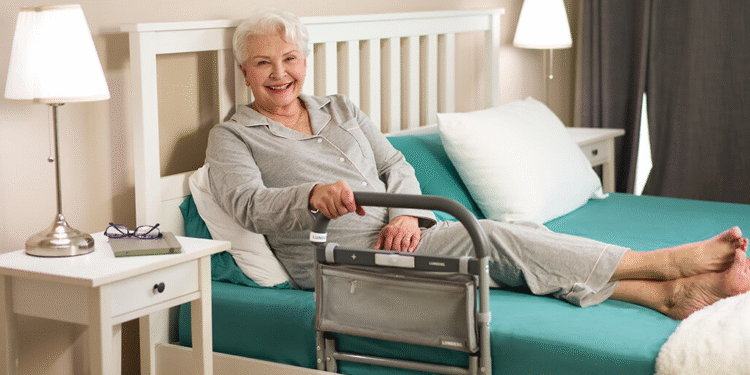The bedroom is a sanctuary for many, a place where comfort and rest are paramount. However, for those with mobility or health issues, it also represents a space where safety measures must be carefully considered to prevent accidents and falls. While various measures can be taken to enhance bedroom safety, this article will focus on one key solution: the incorporation of bedrails in a homecare setting.
Understanding the Purpose of Bedrails
Bedrails, also known as safety rails or bed guards, are designed to provide a physical barrier along the side of a bed. They serve to prevent the user from rolling off the bed while asleep, as well as to provide support when getting in or out of the bed. Bedrails are vital for those with limited mobility, including the elderly, those recovering from surgery, or individuals with physical disabilities.
Types of Bedrails and Their Uses
There are various types of bedrails available, each with distinct features catering to specific needs. Some are fixed, while others are adjustable or portable, offering flexibility for different bed sizes and user requirements. For maximal safety, it is important to choose bedrails that are compatible with the user’s bed and the intended purpose, whether it is for temporary assistance or long-term use.
Key Benefits of Installing Bedrails
Integrating bedrails into the homecare plan can deliver several benefits:
- Prevention of falls and related injuries.
- Enhanced confidence and independence for the user.
- Extra support for activities such as reading or watching television in bed.
- Assistance in maintaining a comfortable sleeping position.
- Peace of mind for both the user and their carers.
Selecting the Right Bedrails for Your Needs
Choosing the correct bedrails is crucial and should be done with careful consideration of the user’s physical condition, the type of bed they use, and the level of support required. It is advisable to consult with a healthcare professional or a specialist in homecare solutions to determine the most suitable type of bedrail.
Installation and Safe Use of Bedrails
Proper installation is essential to ensure the effectiveness and safety of bedrails. They should be securely fitted to the bed frame to prevent movement or gaps that could lead to entrapment or injury. Additionally, users and carers should be instructed on safe practices to avoid hazards related to improper use.
Considerations for Comfort
While safety is the primary concern, comfort should not be overlooked. Bedrails should be padded or designed in a way that does not cause discomfort or impede restful sleep. They should also allow for easy access to bed linen for changes and cleaning.
Maintaining Bedroom Safety Beyond Bedrails
In complementing bedrails, several other adjustments can enhance the safety of a bedroom environment.
- Ensure clear pathways to and around the bed to reduce tripping hazards.
- Install adequate lighting for nighttime visibility.
- Keep essential items within easy reach.
- Consider a bedside fall mat as an added precaution.
Legislation and Standards for Bedrails
It is imperative to be aware of any legislation and standards regarding bedrail use, especially in a professional homecare setting. These regulations aim to protect users by ensuring the quality and safety of the equipment.
Choosing the Right Provider for Bedrails
Working with a reputable provider is essential when selecting bedrails. Look for companies that offer a comprehensive range of homecare solutions and have expertise in bedroom safety. Providers should also have positive customer feedback and an excellent track record for product quality and service.
Conclusion
In summary, bedrails are an important aspect of homecare and can greatly improve the safety and comfort of individuals in need of extra support in the bedroom. When selecting and installing bedrails, consider the types available, user-specific needs, and comfort. Always ensure they are compliant with relevant standards and installed by a professional if necessary.
Creating a safe bedroom environment goes beyond installing bedrails. It also involves ongoing assessment to keep pace with the changing needs of the user. By taking these considerations to heart, carers can ensure their loved ones or clients experience both safety and comfort as they rest.
The bedroom should be a safe haven, and with the right planning and equipment, such as reliable bedrails, it can remain so for those who require homecare support. While bedrails serve as an immediate safeguard, a holistic approach to bedroom safety ensures a sustainable and dependable environment for rest and recovery.













